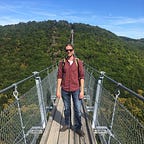Space Science with Python #1 & #2: Setup
The first and second video of my “now to YouTube moved” Python tutorial series shows 2 ways of how to setup your Python environment
I wrote in my previous article that my 2020 “Space Science with Python” tutorial series migrates slowly to YouTube (to my channel Astroniz). Before I provide new content e.g., about meteor stream analysis, spacecraft data and ConvNet applications on spectral data, the already existing articles will be recorded and uploaded accordingly. Currently (end of December 2021) around 20 videos have been uploaded with some additional support material on astro-physical concepts and space-related toolkits that go beyond Python.
For each video, I will provide a 2 min summary on Medium to contextualize the current video in the bigger picture. Detailed coding parts will be described on YouTube and the corresponding scripts can be found on my GitHub repository. The supportive articles are more of a story-telling that shall help one to determine whether the tutorial is worth the 20–40 min… or not!
Now the first 2 videos are about setting up the Python environment for the tutorial series. The first one is the most standard approach: using virtual environments and pip on a Unix machine:
However, there is a second, and in my opinion more powerful approach that shall be considered: Using VS Code and Remote Containers.
Docker enabled us coders to containerize applications, deploy and scale them without any headache almost anywhere, independent on the architecture or environment. But Docker enables one also to containerize one’s development environment entirely. The VS Code extension Remote Containers provides a way to create and develop within a “development container”. The corresponding Dockerfile and IDE configuration files can be shared between developers of e.g., the same DevOps team that use different operating systems; or to share a rather complex and cumbersome to install setup.
Now, how can this amazing setup beging installed and used? This is shown in the tutorial #3.
The next videos will be described shortly. In the meantime, if you are interested, please check the repository folder structure that corresponds to each video and the videos’ description. More updates will follow here and on Twitter.
Stay tuned and curious!
Thomas
